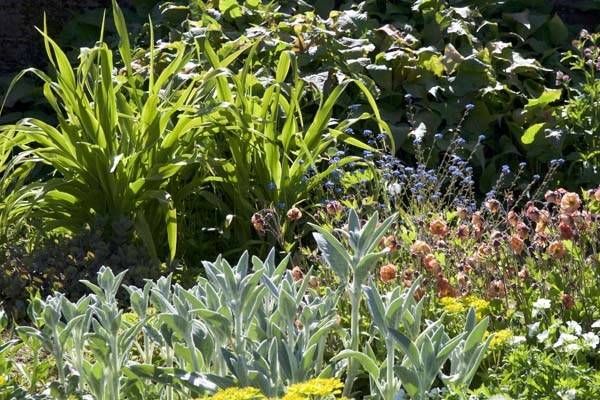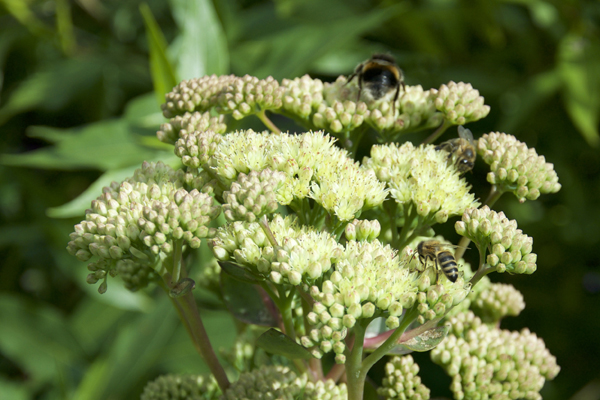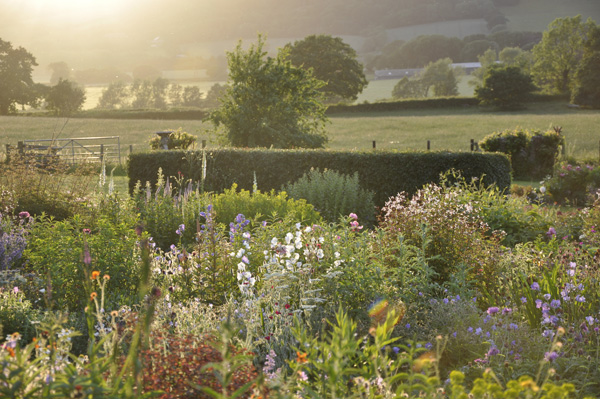Campanula (Canterbury Bells) Plant & Care Guide
There are lots of types of Campanula, all provide the border with a flowery, cottage feel. The other name for this variable bunch is Bellflower for the obvious reason, as the flowers are bell-shaped. The flower clusters make this a bee friendly plant and good choices for a garden border.
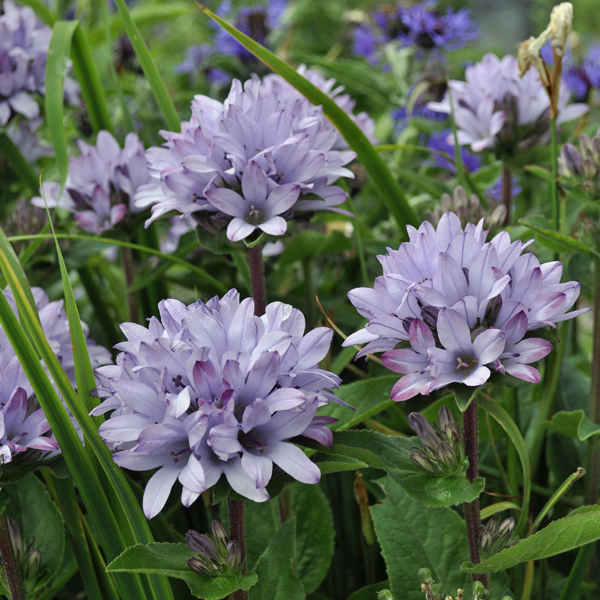
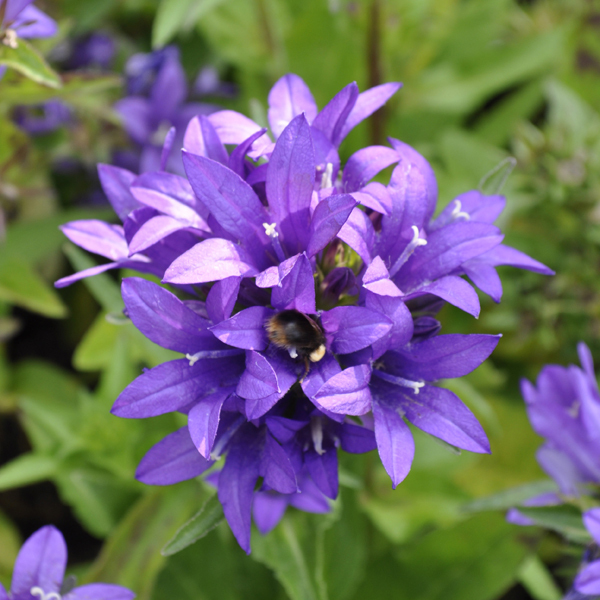

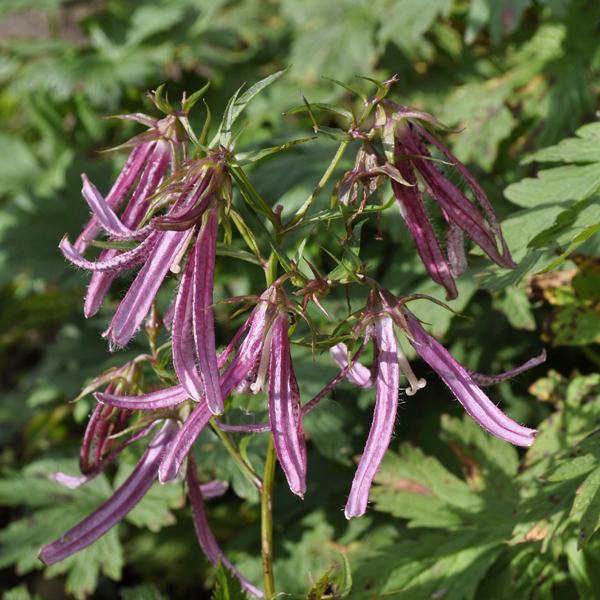
Left to right: Short, spreading varieties include Campanula glomerata 'Caroline', Campanula glomerata 'Superba', Campanula 'Snow Dune', Campanula 'Pink Octopus'
Types of Campanula
Bellflowers come in very different varieties that differ by more than their appearance. Our online plant shop sells 13 of these, and. Some, such as C. punctata, will spread vigorously, especially in a moist soil. Others, such as C. persicifolia, only spread slowly. C. lactiflora is the tallest, reaching up to 120cm in a good, moisture retentive soil. Next there are the mid-range growers such as C. trachelium, and finally there are the shorties, such as C. glomerata, which are ideal for the front of the border.
When does Campanula Flower?
Campanula have a habit of flowering at the most important time of the year, just when we love our gardens most, when the weather gets warm. Most flower between June and August, but a few, such as C. 'Iridescent Bells', are perennials that bloom all summer until September. The flowers, which are always white or blue, do vary in shape and form, from deeply cupped to wide and narrow. These can be borne on tall, stiff stems or arching stems, and may face upwards, outwards or sideways. The flowers of C. glomerata even form tight, round balls.

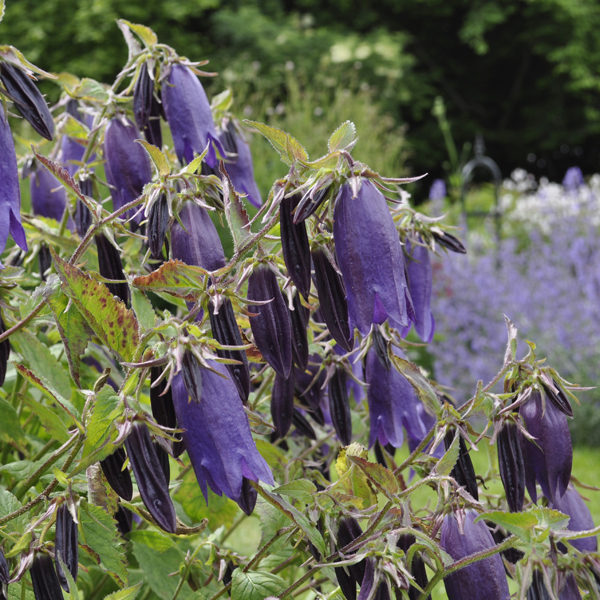

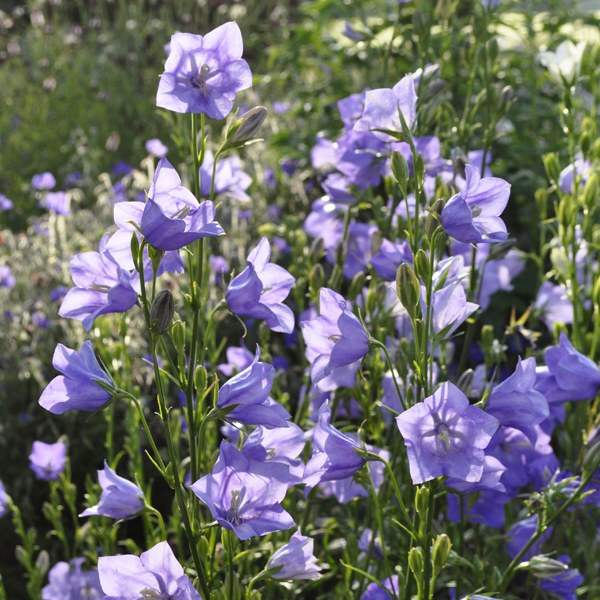
Left to right: Campanula that grows to medium height include Campanula punctata rubriflora, Campanula 'Sarastro', Campanula alliariifolia, Campanula persicifolia
Campanula Leaves & Appearance
The leaves, which are almost always mid-green, can be carried up the stems or spring from the crown of the plant, forming rosettes as the plant grows. In shape the plant can be stiffly upright, billowing and blousy, spreading or mounding. This makes them useful for all styles and areas of the garden.
Where do Campanulas Come From
This bee friendly plant can be found throughout the UK and Europe’s open meadows and woodlands, where they grow along the dappled edges. The reason for its common name needs no explanation, though you might be surprised to learn the taxonomic name is Latin for “little bell”.
Campanula Planting Guide
Where To Grow Campanulas
Campanulas grow in any well-drained soil that is not too dry soil or too wet. They don't mind full sun or part shade, and will blend beautifully into any border. Some varieties such as C. persicifolia types are evergreen and will readily seed around a border when happy.
As a perennial that blooms all summer, it doesn’t enjoy frosts and wet winters. Though these are hold hardy perennials and established, well-rooted plants are hardy even in severe frosts.
How to Plant Campanulas
Bellflowers bought from an online plant shop should be planted in spring, with weekly watering to help it establish its roots.


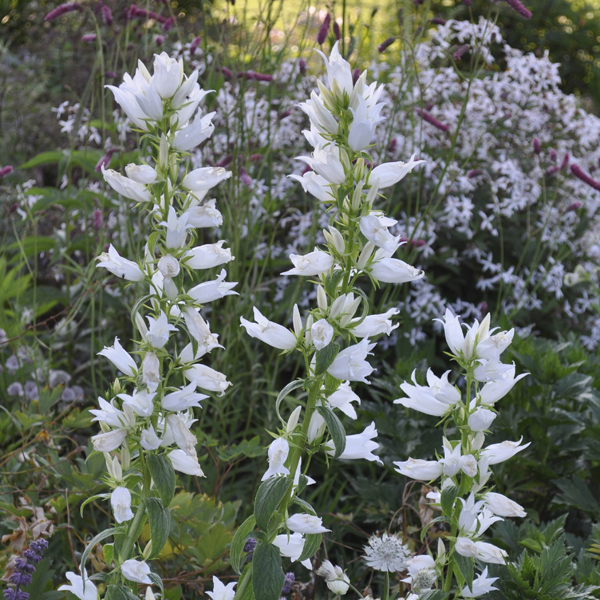

Left to right: Tall varieties suitable for the back of the border are Campanula lactiflora 'Alba', Campanula latiloba 'Highcliffe Variety', Campanula latifolia var. Alba, Campanula lactiflora
How To Care For Campanulas
They need no fertiliser, and only the tallest varieties need staking if grown in a windy position. Disease-free and easy to grow, Campanula can be divided every 3 or so years to maintain vigour.
Pruning
Easy – just cut the flower stems back after they have finished blooming. With C. lactiflora types I tend to cut back to the axel that has bloomed to allow the buds further down the stem to open.
Pests
Aphids, slugs, and snails are known to target Bellflowers. Powdery mildew is uncommon on most hardy varieties, but remains something to watch out for.
Is Campanula Invasive?
The creeping bellflower C. rapunculoides spreads very vigorously, is quick to colonise, and difficult to remove due to its deep roots. This species is confirmed invasive, though you are unlikely to find it for sale it in any sensible garden centre or online plant shop. The common varieties for sale are not nearly as prolific as this creeping variety.
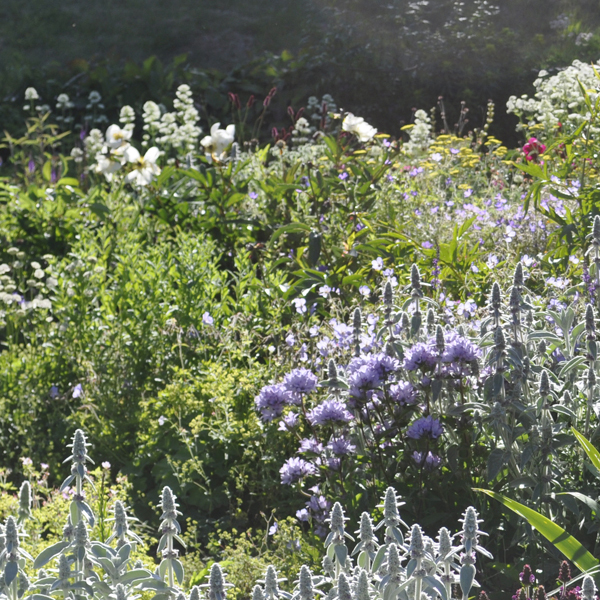
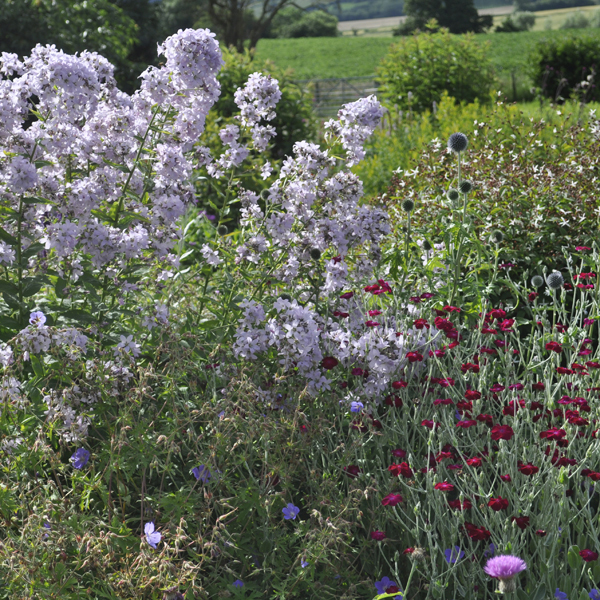
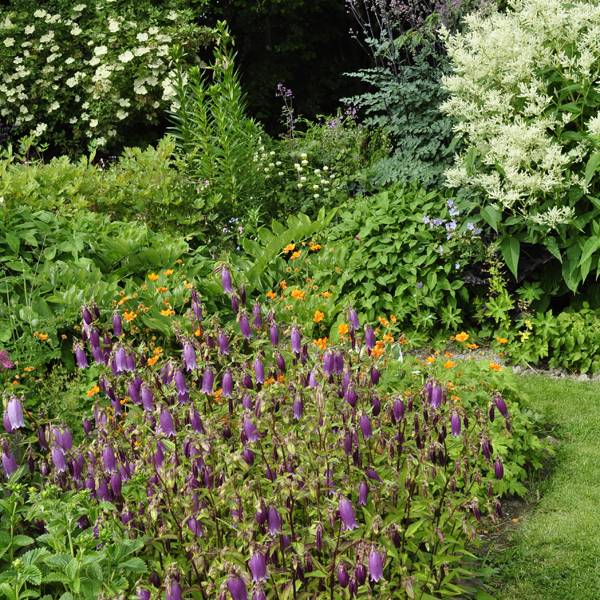
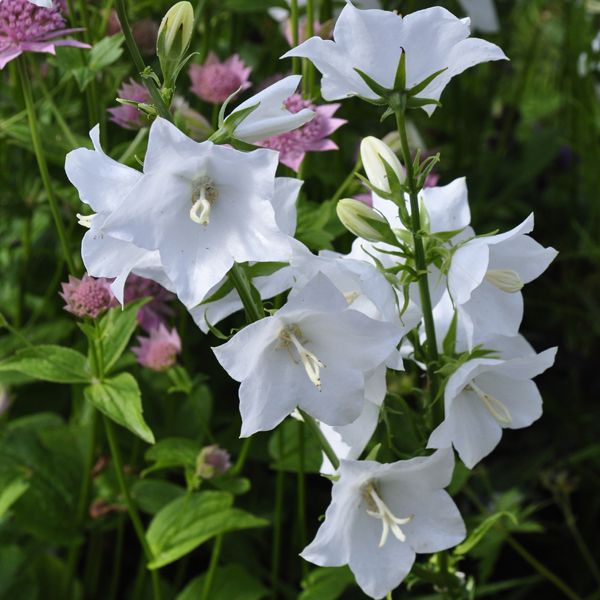
Left to right: Campanula glomerata 'Caroline' in a bed of silvered leaved plants, Campanula lactiflora 'Loddon Anna' with Lychnis coronaria, Campanula punctata rubriflora along the front of a border, Campanula persicifolia alba with Astrantia maxima
